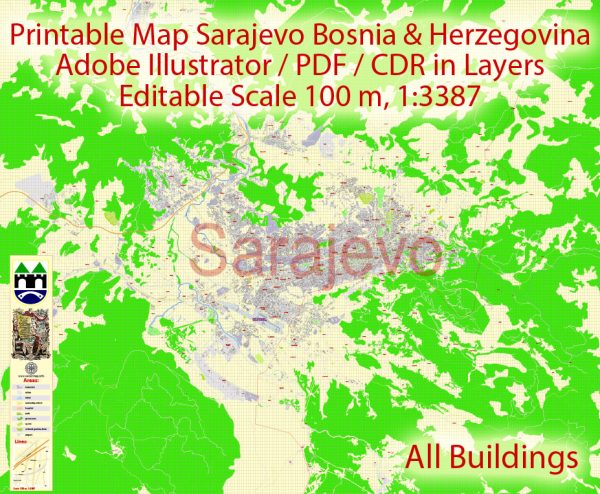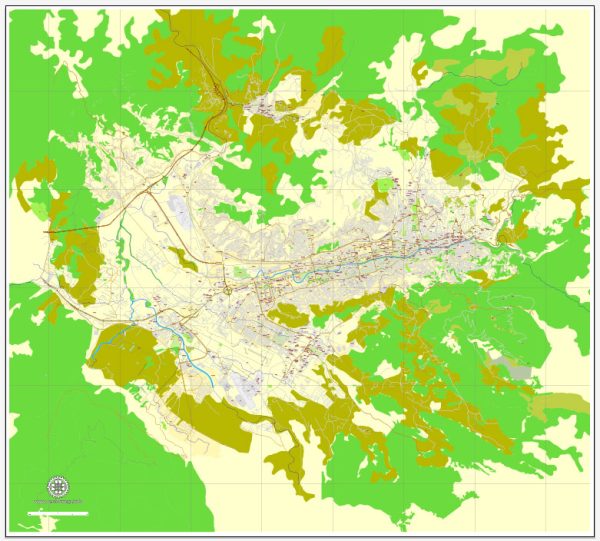Sarajevo, the capital of Bosnia and Herzegovina, boasts a rich architectural heritage that reflects its complex history and diverse cultural influences. The city’s architecture is a fascinating blend of Ottoman, Austro-Hungarian, Yugoslav, and contemporary styles, each contributing to its unique character. Here’s a brief description of some of the architectural elements and styles you can find in Sarajevo:
- Ottoman Architecture:
- Sarajevo’s old town, known as Baščaršija, is a prime example of Ottoman architecture. It features narrow, winding streets, courtyards, and traditional wooden houses with overhanging upper floors.
- Mosques, such as the Gazi Husrev-beg Mosque, display typical Ottoman architectural features with their elegant minarets and domed structures.
- Turkish baths (hamams) and caravanserais also add to the Ottoman architectural heritage of the city.
- Austro-Hungarian Architecture:
- During the Austro-Hungarian rule in the late 19th and early 20th centuries, Sarajevo saw the construction of numerous grand buildings, many of which still stand today.
- Austro-Hungarian architecture is characterized by its ornate facades, large windows, and a blend of architectural styles like Renaissance, Baroque, and Secession (Art Nouveau). Examples include the City Hall (Vijećnica) and the National Museum.
- Socialist and Yugoslav Architecture:
- In the post-World War II period, Sarajevo, as part of Yugoslavia, saw the development of modernist and Brutalist architecture.
- The National Library (Vijećnica) is a notable example of Yugoslav modernist architecture.
- The city’s housing blocks and residential complexes often exhibit the functionalist principles of this era.
- Contemporary Architecture:
- In recent years, Sarajevo has witnessed a growing influence of contemporary architectural styles and modern construction techniques.
- Some new buildings feature a fusion of traditional and modern design elements, blending the city’s architectural heritage with current trends.
- Austro-Hungarian Bridges:
- Several picturesque bridges in Sarajevo, like the Latin Bridge and Festina Lente Bridge, showcase Austro-Hungarian engineering and design.
- Bazaar Streets:
- Sarajevo’s bazaar streets, including Baščaršija, offer a unique architectural experience with their cobblestone pathways, small shops, and traditional crafts.
- Ottoman-Style Fountains:
- The city is dotted with Ottoman-style fountains known as “sebilj,” which are not only functional but also decorative elements of the urban landscape.
Sarajevo’s architectural diversity reflects its historical and cultural significance as a crossroads of different civilizations. The city’s architecture tells the story of its past and contributes to its distinct atmosphere, making it a fascinating destination for both history enthusiasts and architectural connoisseurs.



 Author: Kirill Shrayber, Ph.D.
Author: Kirill Shrayber, Ph.D.